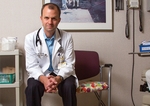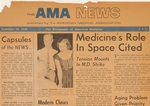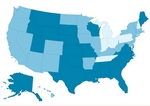business
More patients seeing only allied health workers
■ A CDC report is the latest to show the growing presence of nonphysician clinicians.
By Victoria Stagg Elliott — Posted Nov. 29, 2011
- WITH THIS STORY:
- » Who's providing outpatient hospital care?
- » Related content
A growing proportion of patients in hospital outpatient departments is receiving care from physician assistants and advance practice nurses without seeing a physician.
"Their practice appears complementary and growing over the last few years, especially in areas with few physicians," said Esther Hing, MPH, statistician with the Centers for Disease Control and Prevention's National Center for Health Statistics.
Physician assistants work with doctor supervision. Rules vary governing advance practice nurses, most of whom are nurse practitioners.
Some 10% of outpatients getting care in hospitals from 2000 to 2001 saw only a PA or an APN, according to a Nov. 16 data brief co-written by Hing that analyzed data from the National Hospital Ambulatory Medical Care Survey. An additional 3% were seen by a physician with a PA or APN.
The proportion of patients seeing only nonphysician clinicians grew to 15% in 2008-09, again with 3% seeing a physician working with these professionals. The percentage of people seen by only a physician declined from 77% in 2000-01 to 72% in 2008-09.
When numbers for the 2008-09 period were broken down, 24% of patients receiving outpatient services from hospitals with fewer than 200 beds were cared for by only a PA or APN. This was true for only 10% of patients at hospitals with more than 400 beds. Rural areas also relied more on these practitioners than urban areas. A total of 36% of patients received PA or APN care in nonmetropolitan areas. This was true for only 6% getting services in large metropolitan areas.
This is the latest report saying PAs and APNs are giving more medical care. According to an annual census released Sept. 8 by the American Academy of Physician Assistants, 40,469 physician assistants were in practice in 2000. This went up to 83,466 in 2010. An Aug. 17 NCHS data brief said 49% of physicians in office-based practices did so with PAs, nurse practitioners or certified nurse midwives.
Experts said these allied clinicians are becoming more common because physicians are in short supply, and demand from an aging and expanding patient population is growing.












